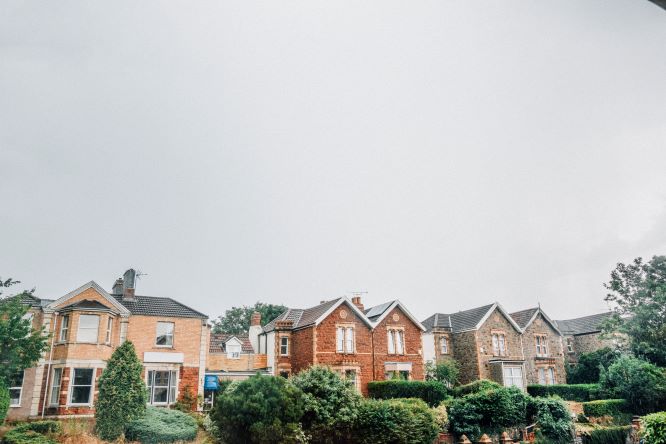Have you ever wondered how to choose the perfect home? With so many types of homes available, finding the right one can feel overwhelming. Whether you’re a first-time buyer, a seasoned homeowner, or someone looking to rent, understanding the various home types is crucial. The perfect home isn’t just about aesthetics; it’s about lifestyle, budget, and functionality.
In this guide, we’ll explore the different types of homes, their unique features, pros and cons, and how to choose the one that fits your needs. Whether you’re into cozy condos, sprawling single-family homes, or trending tiny houses, there’s something here for everyone. Let’s dive in!
What Defines a Home Type?
Before we delve into specific types of homes, let’s clarify what determines a home type. A home’s type is defined by several factors, including:
- Structure: The physical design and layout (e.g., single-family, duplex).
- Function: How the home is used (e.g., personal residence, rental property).
- Ownership Model: Owned outright, rented, or shared ownership (e.g., co-ops).
- Location: Urban, suburban, or rural settings can influence the design and purpose of a home.
Here’s a quick comparison of some major home types to set the stage:
| Home Type | Key Features | Best For |
|---|---|---|
| Single-Family Home | Standalone, private property | Families, privacy seekers |
| Multi-Family Home | Multiple units in one structure | Investors, multi-generational living |
| Condominium (Condo) | Owned unit within shared space | Urban dwellers, low-maintenance seekers |
| Townhome | Shared walls, private entrance | Suburban families, first-time buyers |
| Mobile/Manufactured | Portable, affordable housing | Budget-conscious buyers |
| Tiny Homes | Small, minimalist living | Eco-friendly, minimalist lifestyles |
Major Categories of Homes
1. Single-Family Homes
What is a Single-Family Home?
A single-family home is a standalone property designed for one family. These homes typically offer private yards, garages, and plenty of living space.
Features:
- Full ownership of the land and structure.
- No shared walls or communal spaces.
- Often located in suburban or rural areas.
Pros:
- Maximum privacy and space.
- High resale value.
- Great for families seeking long-term stability.
Cons:
- Higher maintenance costs.
- Often more expensive than other types of homes.
Who it’s Best For:
Single-family homes are ideal for families, privacy seekers, and those looking for long-term investment opportunities.
2. Multi-Family Homes
What are Multi-Family Homes?
A multi-family home contains multiple units within one building, such as duplexes, triplexes, or fourplexes.
Features:
- Separate entrances for each unit.
- Can be owner-occupied or rented out.
Pros:
- Generates rental income.
- Suitable for multi-generational households.
Cons:
- Less privacy than single-family homes.
- Requires landlord responsibilities if rented out.
Who it’s Best For:
Investors, landlords, and families looking to live close to extended relatives.
3. Condominiums (Condos)
What is a Condo?
Condos are individually owned units within a larger building or complex. Residents share common areas like gyms, pools, and hallways.
Features:
- Shared amenities.
- Managed by a homeowners’ association (HOA).
Pros:
- Affordable entry point for buyers.
- Low maintenance (HOA handles exterior upkeep).
Cons:
- HOA fees can be expensive.
- Less privacy compared to standalone homes.
Who it’s Best For:
Urban dwellers, first-time buyers, or those seeking a low-maintenance lifestyle.
4. Townhomes
What is a Townhome?
Townhomes (or row houses) are multi-story homes that share walls with neighbors but have separate entrances.
Features:
- Often more spacious than condos.
- Private outdoor areas (e.g., patios or small yards).
Pros:
- More affordable than single-family homes.
- Urban and suburban options available.
Cons:
- Shared walls reduce privacy.
- HOA fees may apply.
Who it’s Best For:
Young professionals, small families, and first-time homebuyers.
5. Apartments
What is an Apartment?
Apartments are rental units located within larger residential buildings. They can be short-term or long-term housing options.
Features:
- No ownership responsibilities.
- Typically located in urban areas.
Pros:
- Flexibility for short-term living.
- Access to amenities without ownership costs.
Cons:
- No equity-building potential.
- Subject to landlord rules and rent increases.
Who it’s Best For:
Short-term residents, students, and urban professionals.
6. Mobile and Manufactured Homes
What are Mobile and Manufactured Homes?
Mobile homes are prefabricated homes built in factories and transported to a site. Manufactured homes are a modern version with updated construction standards.
Features:
- Affordable and portable.
- Often located in dedicated communities.
Pros:
- Low cost of ownership.
- Quick assembly and relocation.
Cons:
- Limited appreciation in value.
- May face zoning restrictions.
Who it’s Best For:
Budget-conscious buyers and those seeking flexibility.
7. Specialty and Alternative Homes
Specialty homes offer unique living experiences and often cater to specific lifestyles.
Examples:
- Tiny Homes: Compact and eco-friendly, ideal for minimalists.
- Modular/Prefab Homes: Factory-built sections assembled on-site, offering custom designs.
- Co-ops: Shared ownership of a building, common in urban areas.
- Floating Homes: Houses built on water, perfect for waterfront living.
Who it’s Best For:
Adventurous homeowners and those seeking sustainable, minimalist, or unique lifestyles.
Popular Home Styles: Design and Architecture
1. Architectural Styles Around the World
Homes come in various architectural styles, each reflecting cultural and historical influences. Some popular styles include:
- Colonial: Symmetrical layouts, pitched roofs.
- Craftsman: Exposed beams, natural materials.
- Victorian: Ornate details, bright colors.
- Ranch: Single-story, open layouts.
- Modern/Contemporary: Clean lines, large windows.
- Cottage: Cozy, rustic charm.
2. Home Type vs. Home Style
It’s important to distinguish between home type (structure) and home style (design). For example:
- A single-family home can be a ranch or Victorian style.
- A tiny home can have a modern or rustic aesthetic.
Choosing the Right Type of Home
Factors to Consider
- Lifestyle: Do you need space for kids, pets, or a home office?
- Budget: Evaluate upfront costs, maintenance, and potential resale value.
- Location: Urban settings suit condos and apartments, while rural areas favor single-family homes.
To compare current home prices and trends by type and region, you can explore detailed insights on Zillow’s official website for real-time data and resources.
FAQs on Choosing a Home Type
- Condo or Townhome? Condos are low-maintenance, while townhomes offer more space.
- Are Tiny Homes Legal? Regulations vary by state and city.
- Can I Rent Out a Duplex? Yes, it’s a common practice.
Trends in Housing: What’s Changing?
The housing market is evolving to meet changing lifestyles and environmental concerns. Key trends include:
- Tiny Homes: Minimalist living is gaining popularity.
- Eco-Friendly Homes: Solar panels and energy-efficient designs are in demand.
- Multi-Generational Living: Demand for in-law suites and ADUs is rising.
Conclusion
Understanding the types of homes available can help you make an informed decision that fits your lifestyle, budget, and long-term goals. Whether it’s the privacy of a single-family home, the affordability of a condo, or the sustainability of a tiny house, there’s a perfect home type for everyone.
Ready to find your dream home? Reach out to a real estate expert or explore more guides to stay informed!



